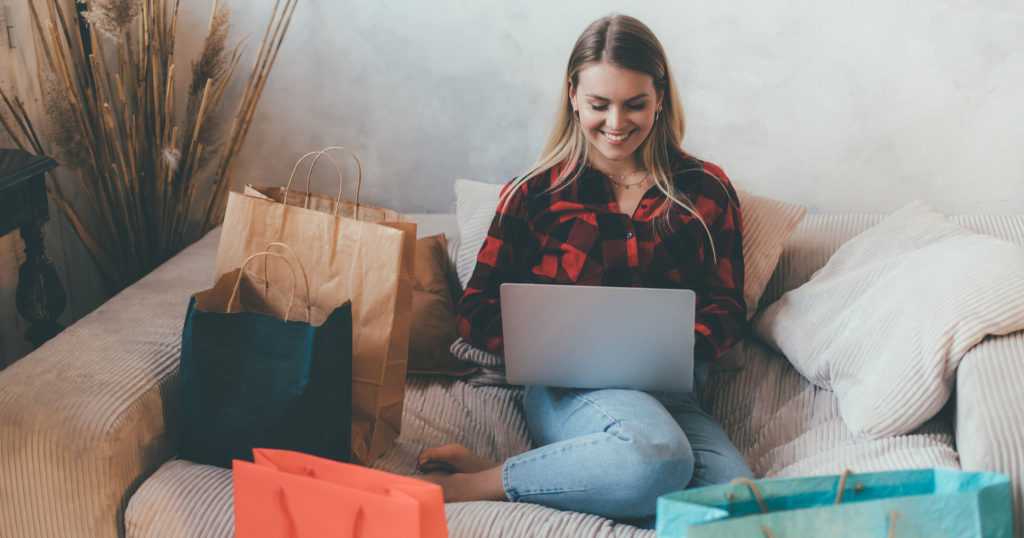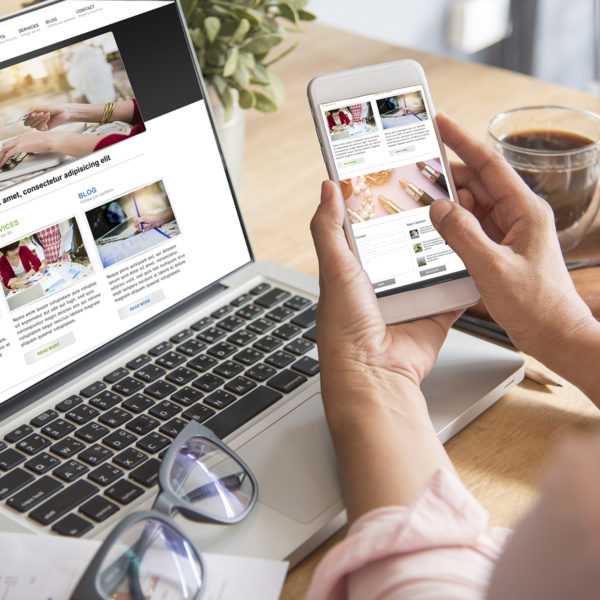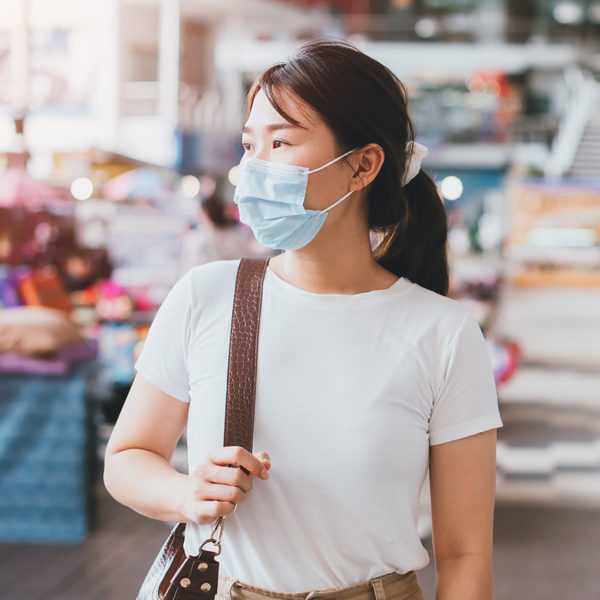Retail Therapy: The Pandemic Edition


As consumers enter the seventh month of a pandemic, personal expenditures have shifted based on financial stability—and a desire to keep people from going crazy.


When the pandemic first hit, the flurry of panic shopping zeroed in on virus-related supplies: hand sanitizer, disinfectant wipes, thermometers and, of course, toilet paper. But as Americans enter the seventh month of COVID, spending has shifted, as things people traditionally spend money on, like European vacations or NFL season tickets, aren’t currently available.
Call it pandemic buying. According to a new report from data giant Nielsen, consumers who are insulated from the economic storm—meaning they haven’t had a major dip in their incomes—are seeking other luxuries to compensate for travel and entertainment. Much of that spending has translated into purchases for the home and outdoors, on everything from chest freezers and massage chairs, to RVs and a hefty amount of alcohol.
While overall consumer spending increased a seasonally adjusted 1.9% in July from June, it grew more slowly than in June (5.6%) and May (8.2%), according to Commerce Department data. Retail experts say stimulus checks buoyed many personal expenditures in the early months of the pandemic, but that it’s too soon to tell if the pace of spending will continue to rise without federal aid.
Still, retail analysts say many consumers aren’t pulling back on purchasing, but are funneling that money into places they may not have pre-pandemic. “Consumer behavior is spinning in fundamental ways right now,” said Nielsen Intelligence Unit leader Scott McKenzie. “The unique macro conditions of a pandemic driving economic recession are forcing consumers to rethink how they shop and what they buy.” He added that habits, which usually take months or even years to adjust, are changing at a faster pace because of current conditions.
To get a better sense of where money is going, we took a look at spending trends in major areas of home and life.
KITCHEN
This spring, when local governments implemented stay-at-home orders, sales of bread makers, waffle irons, and other baking and cooking appliances were flying off the warehouse shelves. In the six weeks ending April 25, dollar sales of hand mixers nearly doubled compared to the same period last year, and sales of stand mixers grew 69%, according to weekly retail data from market research company NDP Group. The pandemic also brought a run on chest freezer sales, electric pasta makers, and soda machines. Active dry yeast for amateur bread makers became the 2020 shortage of the spring and flour was in high demand. It’s no wonder, then, that many diets were put on hold; U.S. adult participation in nutrition or diet programs dropped to 43% in April 2020, compared to 48% a year earlier.
Another reason those nutrition plans may have ebbed? A large increase in alcohol sales, which have climbed 27% since the start of the pandemic. Robert Bresler, a newlywed in St. Louis who had to postpone his wedding celebration because of COVID, and his wife recently bought a case-and-a-half of wine from their favorite winery. “Best way to stimulate the economy while staying home,” he says. According to Earnest Research, Bresler isn’t alone: online alcohol platform Drizly’s sales for the first half of July were up 669% year over year, while Wine.com reported sales jumped 352% in the same period. Some of those sales are also being spurred by companies providing booze for virtual happy hours to try and maintain some semblance of team unity while working remotely.
BATH AND BEAUTY
With hair salons, nail shops, and spas closed for months in many parts of the U.S., many consumers have taken beauty regimens into their own hands. Sales of DIY beauty and at-home skincare tools, such as gel nail kit supplies and shampoos to prolong hair coloring, have increased. At the end of April, Nails Inc., an e-commerce site, said overall sales in the U.S. had skyrocketed 571% over the last five weeks, with sales of gel remover kits increasing 2,000%. And searches for purple shampoo and conditioner, which prolongs hair coloring, grew 40% year over year, according to data from Spate, a food and beauty analytics firm. Spate data also showed a 203% jump in annual sales of skincare fridges in June 2020 and a 70% increase in sales of facial steamers. Rose quartz rollers, often used as a way to destress, and blackhead vacuums also saw double-digit growth.
The stress of the pandemic has also brought about a desire for more relaxation in the home. Sales of massage appliances increased 84% in the two weeks ending April 25, according to the NDP Group, and during the second quarter, sales of home scents, such as candles and diffusers, grew 4 percent.
For Suzy Shipman, a librarian and mother of two who’s working from home, her COVID relaxation purchase came in the form of a blow-up bathtub. Shipman, who lives in the suburbs of Detroit, says she needed the “self-care time that baths give,” but that her bathroom only had a shower. So she bought a blow-up tub for $50 that fits in her bathroom and fills it up with her shower attachment. “I use it probably three times a week.”
MEDIA MANIA
As people continue to look for new ways to entertain themselves at home, streaming services have jumped in popularity, with the likes of Netflix and YouTube leading the way. According to a report from Nielsen, 25% of collective time spent on TV is among streaming-capable homes, up from 6% at the end of last year. What’s more, 25% of respondents surveyed said they have added a paid subscription service to their household in the past three months. Video game spending, too, has increased 30% year over year during the second quarter. “Many [people] have turned to video games not only to keep themselves preoccupied, but also to stay in touch with family and friends,” says NPD Group games industry analyst Mat Piscatella.
As people consume more entertainment, they want to increasingly do it in comfort. For the Seitz family in Maryland, whose boys are eight and five years old, that meant buying a HD projector, 150-inch projector screen, new surround system and, of course, a popcorn maker. “We just needed something different,” says Richard Seitz. “The kids loved it, and after long days stuck at home it was nice to sit down and watch a movie together in something closer to a movie theater.”
THE GREAT OUTDOORS
When Holly Brooks and her husband canceled their annual summer trip to Utah because they didn’t want to fly, they decided to spend some of that money by retrofitting their outdoor patio. The Nashville-based couple bought a bouncy castle for their three children and then decided they deserved something, too: a new patio couch and chairs set. “It was our adult COVID splurge,” Brooks says. “We’re spending so much time in the backyard we thought we’d make it more comfortable.”
Like the Brooks family, consumers lucky enough to have outdoor space have been upgrading the space. In the two weeks ending May 2, sales for hammocks grew 103%, and sales of grills were and smokers were up 74% and 94% respectively, according to data from NDP Group. In April, sales of at-home playground equipment soared 81%, and skateboards and scooter sales surged 107%.
Other folks have taken up outdoor activities—particularly as science has shown being outdoors is much safer amid coronavirus than being indoors. Sales of paddle sports equipment, including kayaks, paddleboards and canoes, increased 56% in June compared to the same time last year, and sales of golf equipment grew 51% in the same time period. As NPD sports industry advisor Matt Powell put it, golf is “reaping the benefits of being a social distance-friendly activity.” Much of the growth in golf equipment came in the form of training aids, such as putting matts and golf nets and screens, which could be used in people’s backyards or garages.
Of course, buying the goods doesn’t always translate into being able to find the time to use them. “For a week we had daily deliveries: new clubs, a new golf bag, golf balls, new outfits,” says one communications executive who decided to upgrade all her golf gear this year. “And we’ve golfed twice this summer.”
Folks who really want to get away from it all have decided 2020 is the year to splurge on an RV. In July, the RV Industry Association reported RV shipments reached 43,035 units—a 53.5% increase from the 28,044 units shipped in July of last year. “RVs have been the ideal way to travel this summer, providing the freedom and fun of RVing while also allowing people to control their environment,” according to association president Craig Kirby.
Indeed, several empty-nesters This Is Capitalism spoke with said they purchased an RV so that they could go on vacation without worrying about where to safely stay amid a pandemic. But the other motivating factor? Grandchildren. “I want to see them and I’m not getting on a plane,” said one woman. “So this was the solution.”

